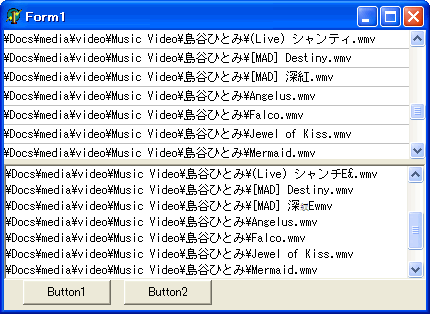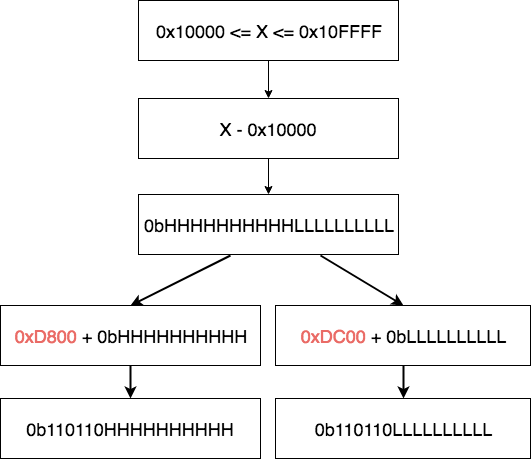
- #Convert utf 16 codepoints to utf 8 c 32 bit
- #Convert utf 16 codepoints to utf 8 c code
- #Convert utf 16 codepoints to utf 8 c windows
#Convert utf 16 codepoints to utf 8 c code
length calculation.įinally, note that the type used by wxString to store Unicode code units ( wchar_t or char) is always typedef-ined to be wxStringCharType. In general, for strings containing many latin characters UTF8 provides a big advantage with regards to the memory footprint respect UTF16, but requires some more processing for common operations like e.g.

UTF8 encoding is more elaborated and in this example takes 7 bytes.

In wxUSE_UNICODE_UTF8=1 case, wxString handles UTF-8 multi-bytes sequences just fine also for characters outside the BMP (it implements per code point indexing), so that you can use UTF-8 in a completely transparent way:Īs you can see, UTF16 encoding is straightforward (for characters in the BMP) and in this example the UTF16-encoded wxString takes 8 bytes. as a surrogate pair as already mentioned however wxString will "see" them as two different code points)
#Convert utf 16 codepoints to utf 8 c windows
(Note however that Windows itself has built-in support for surrogate pairs in UTF-16, such as for drawing strings on screen.) Remarks Note that while the behaviour of wxString when wxUSE_UNICODE_WCHAR=1 resembles UCS-2 encoding, it's not completely correct to refer to wxString as UCS-2 encoded since you can encode code points outside the BMP in a wxString as two code units (i.e. Thus when iterating over a UTF-16 string stored in a wxString under Windows, the user code has to take care of surrogate pairs himself. In other words it always considers code points to be composed by 1 code unit, while this is really true only for characters in the BMP (Basic Multilingual Plane), as explained in more details in the Unicode Representations and Terminology section. in the default wxUSE_UNICODE_WCHAR=1 build under Windows and doesn't know anything about surrogate pairs.

By default, wchar_t is used under all platforms, but wxWidgets can be compiled with wxUSE_UNICODE_UTF8=1 to use UTF-8.įor simplicity of implementation, wxString uses per code unit indexing instead of per code point indexing when using UTF-16, i.e.
#Convert utf 16 codepoints to utf 8 c 32 bit
Since wxWidgets 3.0 wxString may use any of UTF-16 (under Windows, using the native 16 bit wchar_t), UTF-32 (under Unix, using the native 32 bit wchar_t) or UTF-8 (under both Windows and Unix) to store its content. The wxString class has been completely rewritten for wxWidgets 3.0 but much work has been done to make existing code using ANSI string literals work as it did in previous versions. This class has all the standard operations you can expect to find in a string class: dynamic memory management (string extends to accommodate new characters), construction from other strings, compatibility with C strings and wide character C strings, assignment operators, access to individual characters, string concatenation and comparison, substring extraction, case conversion, trimming and padding (with spaces), searching and replacing and both C-like printf ( wxString::Printf) and stream-like insertion functions as well as much more - see wxString for a list of all functions.

WxString is a class which represents a Unicode string of arbitrary length and containing arbitrary Unicode characters.


 0 kommentar(er)
0 kommentar(er)
